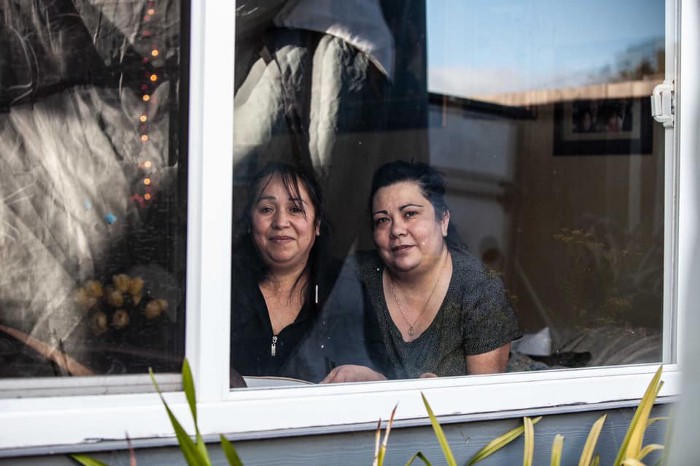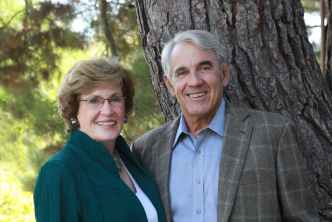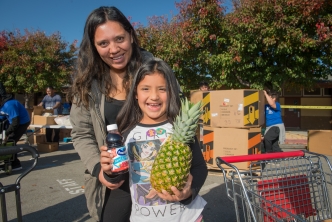
Choosing to See
By Catherine Crystal Foster, CEO & Co-founder of Magnify Community. Originally published on Medium.
Our reality is often shaped by what we see right in front of us — in our homes and in our neighborhoods, in the places we frequent, and on our local news and social media.
During this surreal time, we’ve been in a state of suspended animation, and the bubbles we inhabit have limited our view of the world even more. Many of us haven’t been out regularly driving across town, walking down Main Streets, or exchanging words with the people in hourly jobs that intersect our daily lives in normal times. While cars have sat idle in driveways, the lines of people waiting for food bank distributions have been out of view. For those working in comfort from home over Zoom, it’s hard to visualize the legions of people whose jobs disappeared overnight because cleaning, serving, ticket-taking, or driving doesn’t happen over video. The news from New York City two months ago (ancient history by now) showed horrors that were clearly distant, and that danger feels remote, despite recent surges in Southern California and elsewhere. News cameras never entered the homes of the families doubled up in garages and living rooms in East Palo Alto or east side San Jose — where overcrowding has fueled infection. We may not have seen the parents without laptops or reliable wifi struggling to “homeschool” their kids on cellphones while between shifts at high-risk/low-paid service jobs or planning their survival with no work at all.
For many of us in a position to help, the sun is shining; the flowers are blooming, and the curve in our neighborhoods still feels under control — leading more to venture out, but not too far beyond our bubble. While the return of outdoor fine dining and salon services indicate some shift back to a pre-pandemic world, those are the luxuries of people who have had remarkably little connection to the illness itself. Most of the sickness and death is confined to the neighborhoods and people with less access to health care, fewer resources, and limited choice about social distancing. For many, working from home, paying for food delivery, and isolating from other housemates is simply impossible. These are among the reasons that California’s Latino population has suffered disproportionately from the virus, as have Blacks and Latinos across the county.
Despite this apparent disconnect, a conversation is growing around the principles of what sociologists Chris Benner and Manuel Pastor call solidarity economics, a public policy and philosophical framework demonstrating that caring for others is not just morally good, but promotes better health outcomes, a more stable and prosperous economy, and a more vibrant and resilient society.
I’m heartened to observe other sparks of hope and solidarity as many burst beyond their bubbles. A growing number of individuals and family foundations — many of whom are part of our Magnify Community Pledger network — are funding new cash relief efforts statewide and locally to help our undocumented neighbors, who are simultaneously the most invisible and some of the most essential workers in our community. This is on top of tens of millions of dollars donated to local individuals and nonprofits suffering during the economic and health crisis before us.
As our nation lurches between a restoration of “normalcy” and retreating inwardly, we can stop to look closer around our community and do more than passively observe. We can continue to educate ourselves on racial justice and inequity in our communities, join with other volunteers in Santa Clara and San Mateo counties who are bolstering our safety net by getting proximate to the people and issues we seek to impact, read some of the local journalism that brings the stories we’re missing into our homes, and — of course, give deeply, generously, and with open ears and hearts.
This crisis will endure for quite some time, as a public health, economic, and civic threat. We can’t address a threat we do not see. This moment compels us to look closer, and not avert our eyes. If we do choose to see, we can take the opportunity to build something better, less divided, and more equitable here, where we value the workers newly recognized as “essential,” ensure all children have the tools they need to learn, and create safe and affordable housing for everyone. What better time than now to step outside the bubble and embrace the mutuality in our larger community?
Photo courtesy of Ayudando Latinos A Soñar (ALAS), A Latino Cultural Arts and Social Services Program in Half Moon Bay.
Credits: Susan Friedman Photography


